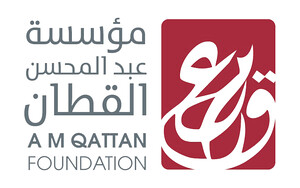10th anniversary of the Young Artist the Year Award
November 20, 2017–December 21, 2018
27 An-Nahda Women Association Street
90606 Ramallah
Palestine
Hours: Monday–Thursday and Saturday 4pm–8am
T +970 2 296 0544
F +970 2 298 4886
info@qattanfoundation.org
The Culture and Arts Programme at the A. M. Qattan Foundation is happy to announce Emily Jacir as curator of the Young Artist of the Year Award 2018 (YAYA 2018) in its 10th anniversary.
The Young Artist of the Year Award, which is named after the late artist Hassan Hourani, is considered one of the most important events in the Palestinian art scene. Since 2000, it has been organised every two years and has engaged renowned artists, critics and curators—such as Mona Hatoum, Okwui Enwezor, Suleiman Mansour, Michelangelo Pistoletto, Jack Persekian, Sasha Craddock, Emily Jacir, Samia Halaby, Sharif Waked, Khalil Rabah and Gerardo Mosquera—to act as Jury members.
In celebration of the 10th edition of the Young Artists of the Year Award, a special selection committee consisting of previous YAYA participants will review the proposals and select 10 finalists based on excellence, commitment, innovation, originality and creativity.
The Curator, Emily Jacir, has stated that the locus of YAYA 2018 will be on themes deriving from the artistic practices of the participants. The curatorial focus for the exhibition will be decided in collaboration with the chosen participants through shared discussions, exchanges and workshops. The Curator’s intention is to create a discourse and discover possible themes based on what cultural, political and social histories the young artists are themselves already exploring in their practices today, rather than imposing a theme onto them. The Curator seeks strong proposals of any kind in any medium. Applicants are encouraged to engage with a wide range of current artistic mediums, practices and research topics. Their research topics will become part of the Curator and the artists’ collective discussions and exchanges. Each participant will be expected to share the body of knowledge behind their project with the group, and this will be accompanied by in-depth conversations of the methods and motivations behind the work. Jacir’s idea in leaving the exhibition without a theme is to allow the artist participants in the project to be involved in knowledge production and to re-evaluate and enhance their practices in the context of a broader artistic discourse with their peers as well as invited seminar guests.

